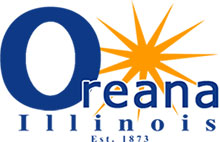IMPORTANT INFORMATION ABOUT LEAD IN YOUR DRINKING WATER
The Village of Oreana Water Department found elevated levels of lead in drinking water in some homes/buildings. Lead can cause serious health problems, especially for pregnant women and children 6 years and younger. Please read this notice closely to see what you can do to reduce lead in your drinking water.
Health Effects of Lead
Lead can cause serious health problems if too much enters your body from drinking water or othersources. It can cause damage to the brain and kidneys, and can interfere with the production of red blood cells that carry oxygen to all parts of your body. The greatest risk of lead exposure is to infants, young children, and pregnant women. Scientists have linked the effects of lead on the brain with lowered IQ in children. Adults with kidney problems and high blood pressure can be affected by low levels of lead more than healthy adults. Lead is stored in the bones and it can be released later in life. During pregnancy, the child receives lead from the mother’s bones, which may affect brain development.
Sources of Lead
The primary sources of lead exposure for most children are deteriorating lead-based paint, lead contaminated dust, and lead-contaminated residential soil. Exposure to lead is a significant health
concern, especially for young children and infants whose growing bodies tend to absorb more lead than the average adult. Infants that drink formula prepared with lead-contaminated water are at a greater risk because of the large volume of water they drink relative to their body size. Lead is rarely found in source water, but enters tap water through corrosion of plumbing materials. Homes built before 1986 are more likely to have lead pipes, fixtures and solder.
Steps You Can Take To Reduce Your Exposure To Lead In Your Water
If the level of lead found in your drinking water is above 15 ppb or if you are concerned about the lead levels at your location, there are several things you can do:
• Run your water to flush out lead. If water hasn’t been used for several hours, run water from your kitchen tap or whatever tap you use for drinking and cooking for at least 3 minutes and it
becomes cold or reaches a steady temperature before using it for drinking or cooking. This will help flush lead-containing water from the pipes. In order to conserve water, you can fill multiple
containers after flushing for drinking, cooking, and preparing baby formula.
• Bottled drinking water should be used by pregnant women, breast-feeding women, young children, and formula-fed infants at homes where lead has been detected at levels greater than
15 ppb.
• Use cold water for drinking, cooking, and preparing baby formula. Do not cook with or drink water from the hot water tap; lead dissolves more easily into hot water. Do not use water from the hot water tap to make baby formula.
• Do not boil water to remove lead. Boiling water will not reduce lead.
• Look for alternative sources or treatment of water.
• Test your water for lead. Call us at the number below to find out how to get your water tested for lead.
• Identify if: your plumbing fixtures contain lead. New brass faucets, fittings, and valves, including those advertised as “lead-free,” may contribute lead to drinking water. As of June 19,
1986, new or replaced water serviced lines and new household plumbing materials could not contain more than 8% lead. Lead content was further reduced on January 4, 2014, when
plumbing materials must now be certified as “lead-free” to be used (weighted average of wetted surface cannot be more than 0.25% lead). Consumers should be aware of this when
choosing fixtures and take appropriate precautions.
What Happened? What is Being Done?
We are conducting water analysis throughout the distribution system to determine what treatment option will control corrosion within homes will works best for our customers.
For More Information Call Larry Coloni at 217-433-8894.
For more information on reducing lead exposure around your home/building and the health effects of lead, visit EPA’s Web site at www.epa.gov/lead or contact your health care provider.
Oreana Water system distributed October 24, 2017

